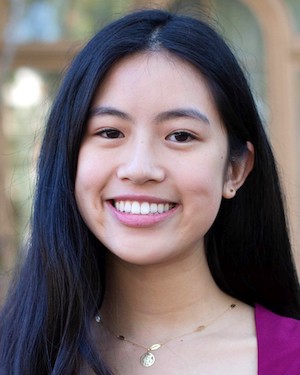What I wish I knew before taking the “Foundations” courses: Part 1

June 18, 2021
by Arianna
Throughout my Junior year, I took the four “Foundations” for occupational therapy courses: Occupation, Kinesiology, Neuroscience, and Creativity, Craft and Activity Analysis. These were some of my favorite classes because I got to know my future professors, I spent more time with the 12 students in my cohort, and I learned material that will support me in my future career as an OT.
By the time this blog is up, the Entry-Level MA students will be finishing their first week of classes, and as some of you may know, they are taking the same four Foundations courses that the BS-MA students took this past year! So, fellow future classmates, this blog is for you 😊 . I’ll be writing tips and advice for each class so keep reading if you want some pointers!
Disclaimer: I’m not sure if the structure of the summer classes is the same as the classes I took. Hopefully it is but if not, I hope you can still gain something helpful from this blog!
Foundations: Kinesiology
In my opinion, Kinesiology was the most challenging Foundations course BUT at the same time it was the class I gained the most from. If you loved anatomy, I think you will enjoy this class as well!
- Tip #1: Use the “Complete Anatomy” app to study
If you don’t have this app already, sign into your USC email and click this link: https://libguides.usc.edu/c.php?g=293713&p=1956412. It will give you access to a FREE lifetime membership to Complete Anatomy! This app is great because it allows you to isolate each muscle and watch them in motion. Seeing how the muscles shortened and lengthened really helped me form a better understanding of the function of each muscle, which in turn helped me memorize the prime actions!
- Tip #2: Get up and move during the test!
Although a normal professor would not appreciate their students standing up and moving around during an exam, Dr. Sopkin encouraged the exact opposite! During the tests, it was SO helpful to act out the different actions of each muscle with my own body. For example, if I couldn’t remember the actions of my anterior deltoid, I would just swing my arm around and note which movements required the use of that muscle. I believe your professor is Dr. Rafeedie this summer, but I think she will also encourage you to do the same.
- Tip# 3: Make empty muscle charts
Pretty soon, all of you will be very familiar with the term “muscle charts”. Once you get these charts, I recommend organizing them by unit, and making a blank version of each chart in Google Docs. When it’s time to study for the exam, pull out your empty muscle charts and fill them in until you can do it from memory. Although the amount of content you need to memorize seems intimidating, if you start memorizing the muscle charts as soon as you get them, you will do just fine.
- Tip # 4: Create acronyms for force couples
Sooner or later, you will learn about force couples, and these can be hard to remember at times, especially when there are multiple in each unit. Acronyms always make memorizing easier for me. Here’s one acronym I made that I remember off the top of my head: SLT (Some Lettuce and Tomatoes). S=Subscapularis, L=Latissimus dorsi, T=Teres major. Together, these muscles aDduct the shoulder. How I remembered this force couple was: AD(d) Some Lettuce and Tomatoes. Lol.
Foundations: Occupation
For everyone who loves history, this class might be your favorite! Being completely honest, this class wasn’t as stressful as Kines. It is largely discussion based, and I was a history nerd in high school so this class was right up my alley.
- Tip #1: Start making a “timeline”
I apologize in advance if you do not have to make a timeline at the end of the summer, but I would start taking notes on 1-2 important figures in each chapter and 1-2 important events. These are facts that you should be writing down regardless, but taking these notes may just help you get a head start on your final project.
- Tip #2: Use the app “Speechify”
If you watched my Instagram takeover a while back, you probably heard me talk about the text-to-speech app, “Speechify”! When I was in Foundations: Occupations, we had a lot of heavy reading. I can’t lie, long and dense readings take me forever to complete because I somehow always manage to read without processing anything. As a result, I have to go back and read the same sentence over and over again until I can comprehend it. When I discovered Speechify, I was able to get through the reedings a lot faster! I am an auditory learner, so listening to the readings made it much easier for me to stay focused.
This blog is getting long so I’ll have to make 2 parts! Come back next Friday for more tips; I’ll be talking about Neuroscience and Creativity, Craft and Activity Analysis!
⋯
Next by tag Classes ⟩ Life Hacks ⟩
⋯





